The untold story of the architect who turned Spain’s modernist power plants into art
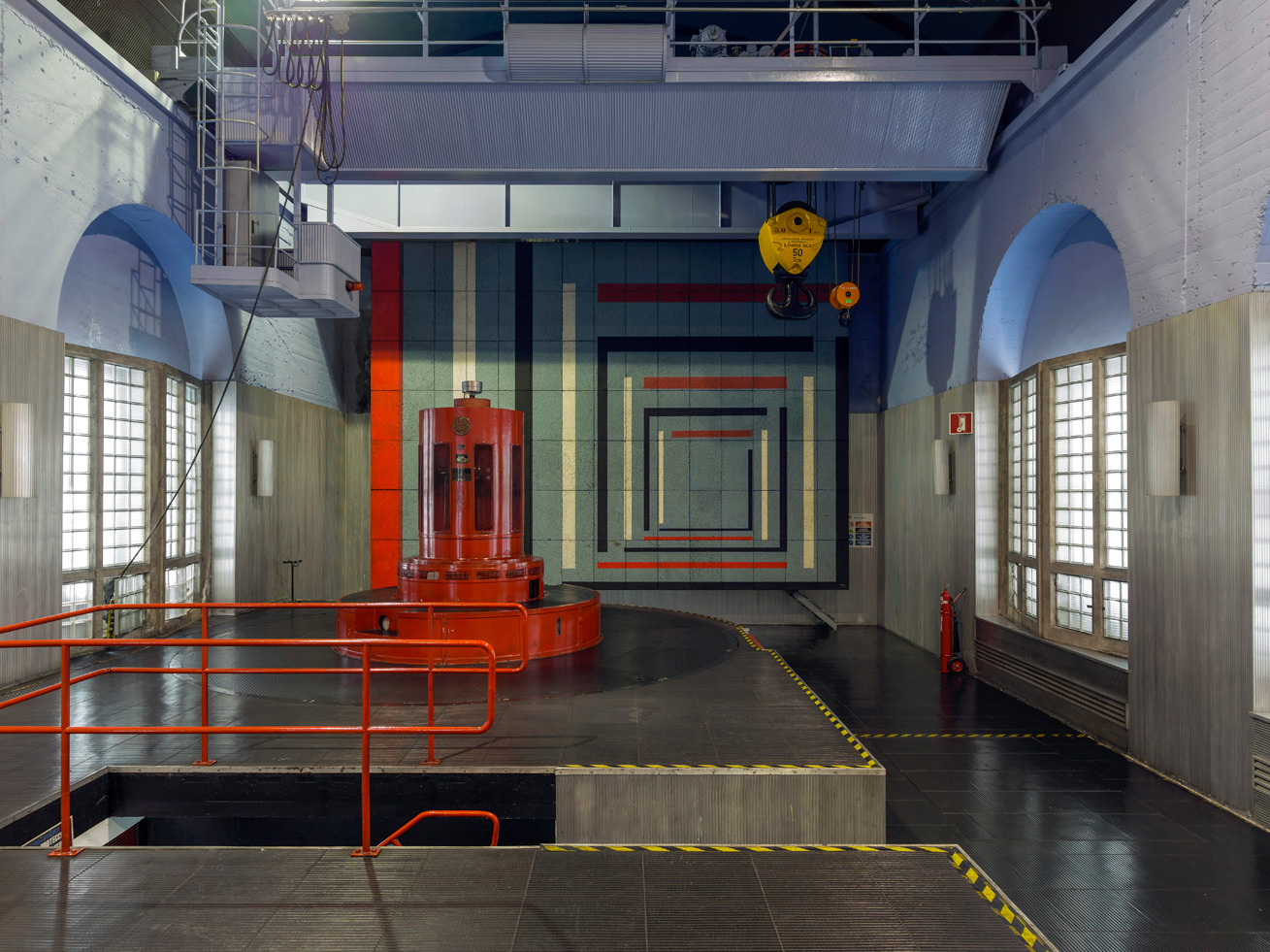
This is a tale of both a family and a country, and their heritages that spanned nearly half a century.
Deep in the Cantabrian Mountains, some 150 kilometres away from his hometown Oviedo in northern Spain, a young Joaquín Vaquero Palacios (1900-1998) used to travel around on horseback with his father, one of the founders of the Hidroeléctrica del Cantábrico company (now part of the EDP group). Here, immersed in resplendent scenery, they scouted for a location for what would become the second largest hydroelectric dam in Europe at the time.
But this was to be no ordinary dam. In the 1950s, Vaquero Palacios – now a trained architect, painter and sculptor – was entrusted by the company’s management to use his creative mind to enhance the environment and condition of its facilities. Over the coming decades, he created some of the finest examples of 20th-century modernist Spanish industrial buildings, integrating technology, architecture, design and art.
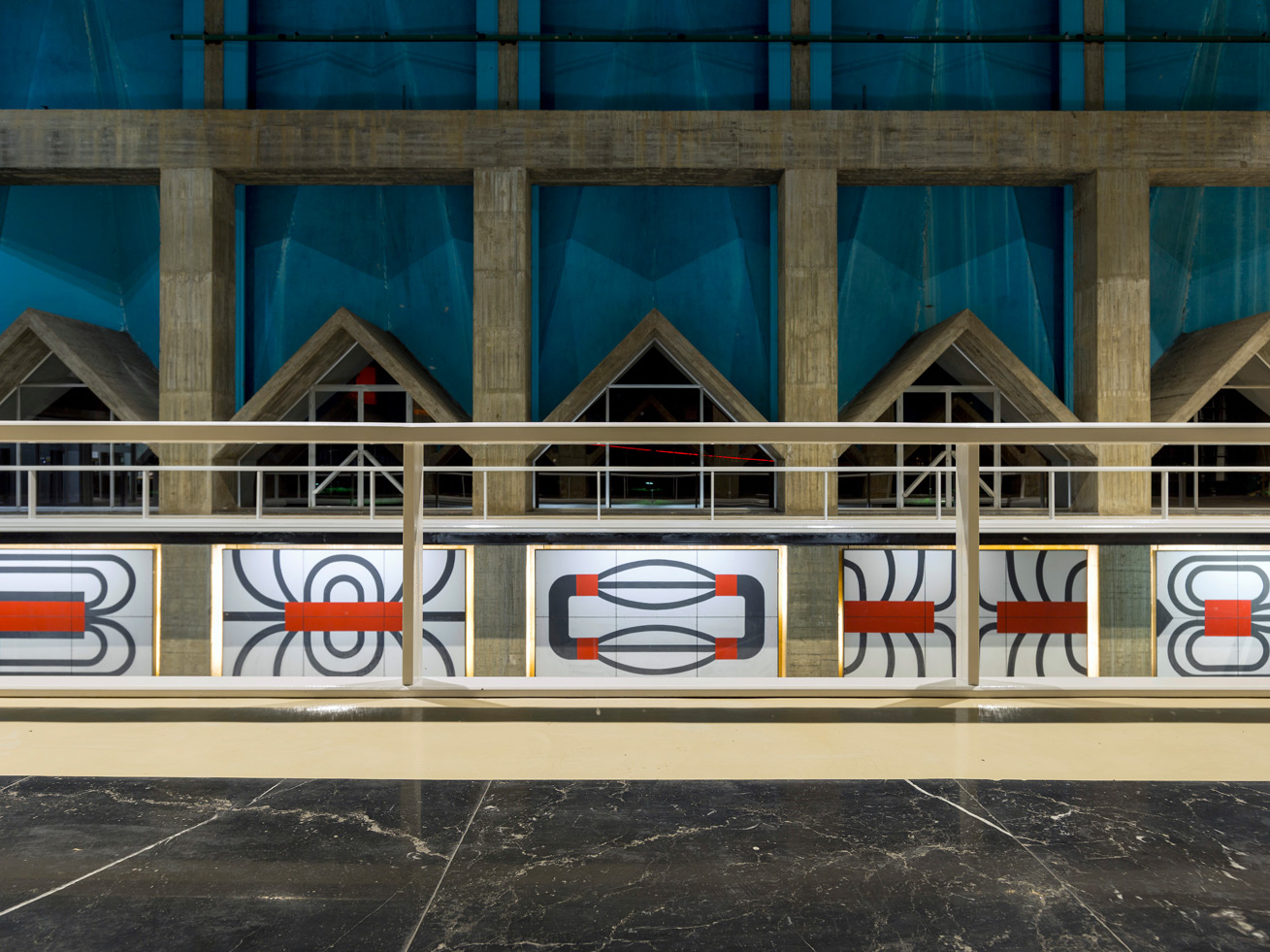
Proaza hydraulic power plant, Trubia River in Proaza, opened 1968, owned by EDP.
Fast forward to 2018 and Joaquín Vaquero Ibáñez, the architect grandson of Vaquero Palacios, who some 18 months ago decided to bring this project to light. ‘This body of work represents the futuristic vision from a very complicated period of Spanish history (the time after the Second World War and the end of the Civil War in Spain). People were able to break local barriers to impose intelligence, sensibility, modernity and an advanced vision of things,’ he says.
Madrid photographer Luis Asín was commissioned to create a new series of visuals to document the dams’ pharaonic dimensions. These images, alongside a selection of unseen old models, original sketches, period photographs and industrial objects, are now part of the exhibition (and accompanying book), ‘Joaquín Vaquero Palacios – The Beauty of the Colossal, Asturias, 1954-1980’, on view at the Museo ICO in Madrid.
Vaquero Palacios started working on Salime, the company’s first plant in Asturias in the late 1950s, and later came the prosperous plants Miranda (1962), Proaza (1968), Aboño (1980), and Tanes (1980). Greatly influenced by both his native landscape and his journeys to places including New York, Mexico City and Rome, the multi-faceted creator designed buildings covered with façades of fractured concrete planes, showing clear influence of expressionist architecture, and designed concrete viewpoints from where to appreciate the monumentality of the dam.
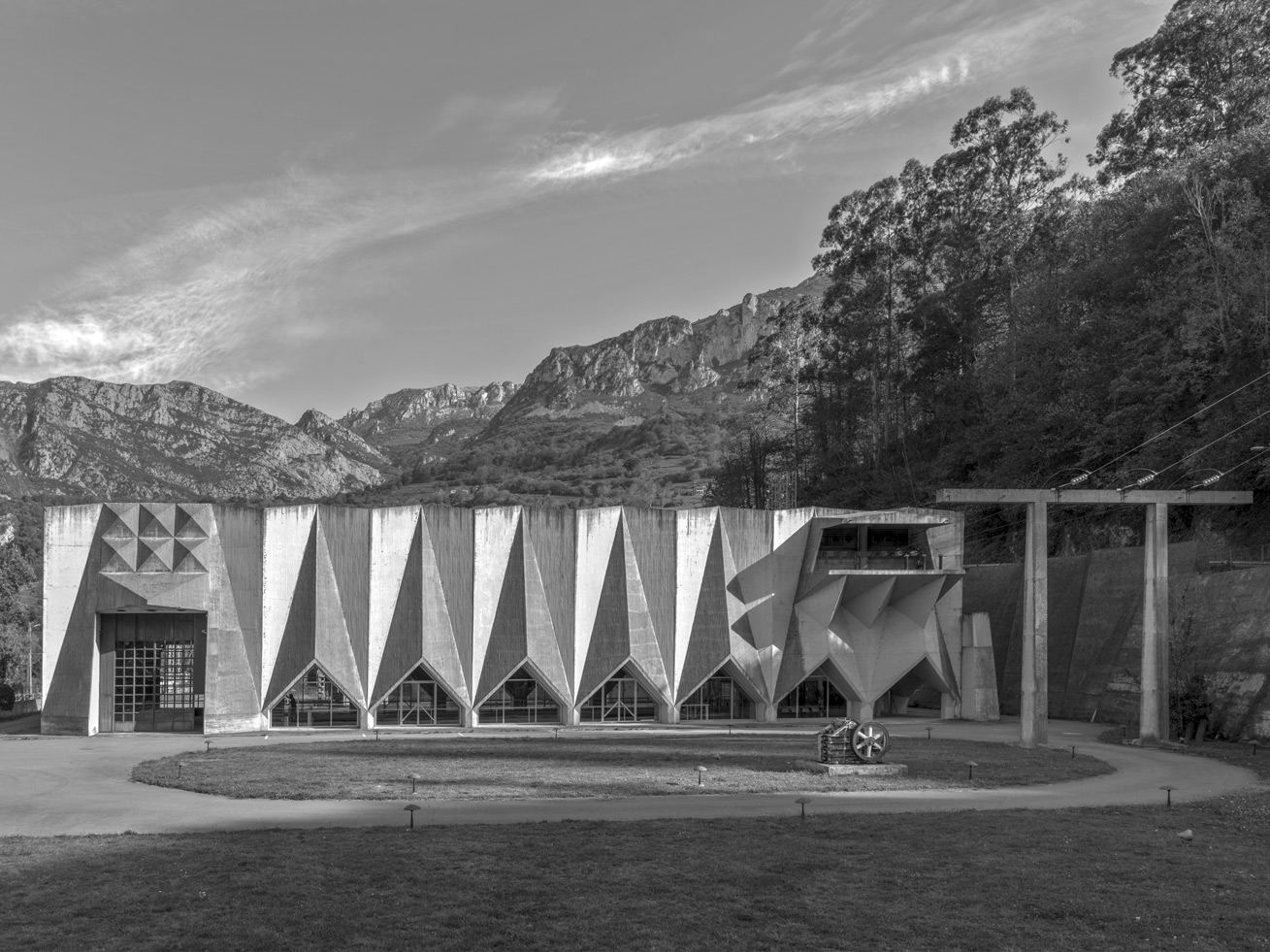
Proaza hydraulic power plant, Trubia River in Proaza, opened 1968, owned by EDP.
The interior is adorned with design elements such as staircases that feature handrails made of electric-cable; a free-standing circular wooden pavilion, in an imitation of a turbine, is placed in the common area as the meeting place; and in the main turbine hall, a vibrant pair of murals cover each side of the room, a co-creation with his son Joaquín Vaquero Turcios (Vaquero Ibáñez’s father). The architect affirmed that the integration of the arts in engineering was absolutely necessary: ‘All our day-to-day activities are saturated so we need to be appeased in some way to survive the tensions which we are subjected to.’
Wallpaper* Newsletter
Receive our daily digest of inspiration, escapism and design stories from around the world direct to your inbox.
The achievement is more than an artistic intervention: the creator has succeeded in transforming these spaces through art and architecture; he has dignified the workplace and eliminated the workers’ sense of being buried in underground areas that can plunge as deep as 300 metres. ‘The concept of Gesamtkunstwerk, which balances engineering, architecture, interior design, design and art is something that we should take more in mind in our world of specialisation. We need people with a more general overview of our actual problematics,’ says Vaquero Ibáñez.
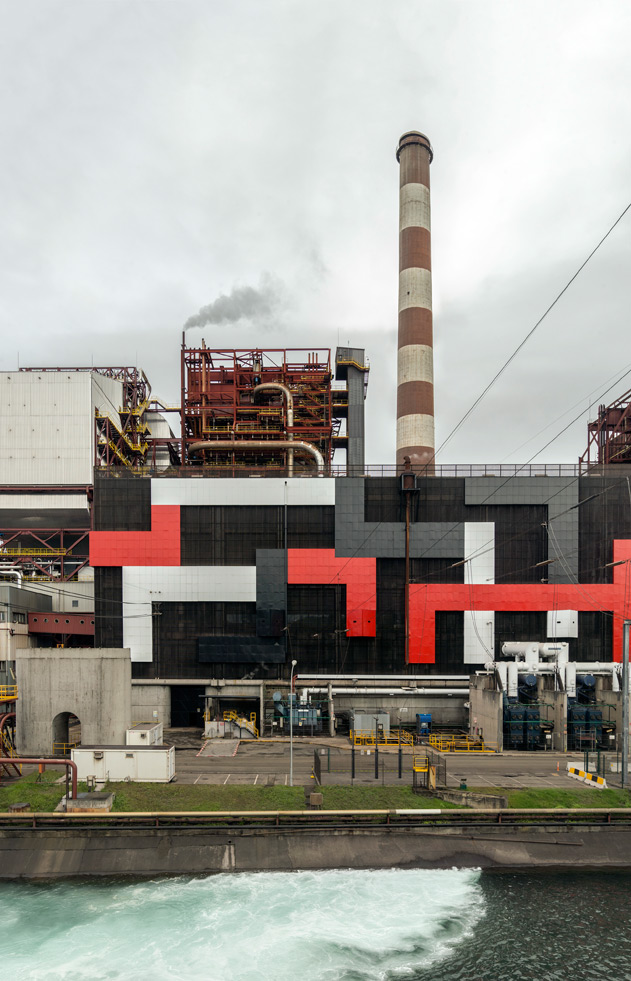
Aboño thermal power plant, Aboño valley between the municipalities of Gijón and Carreño, opened 1980, owned by EDP.
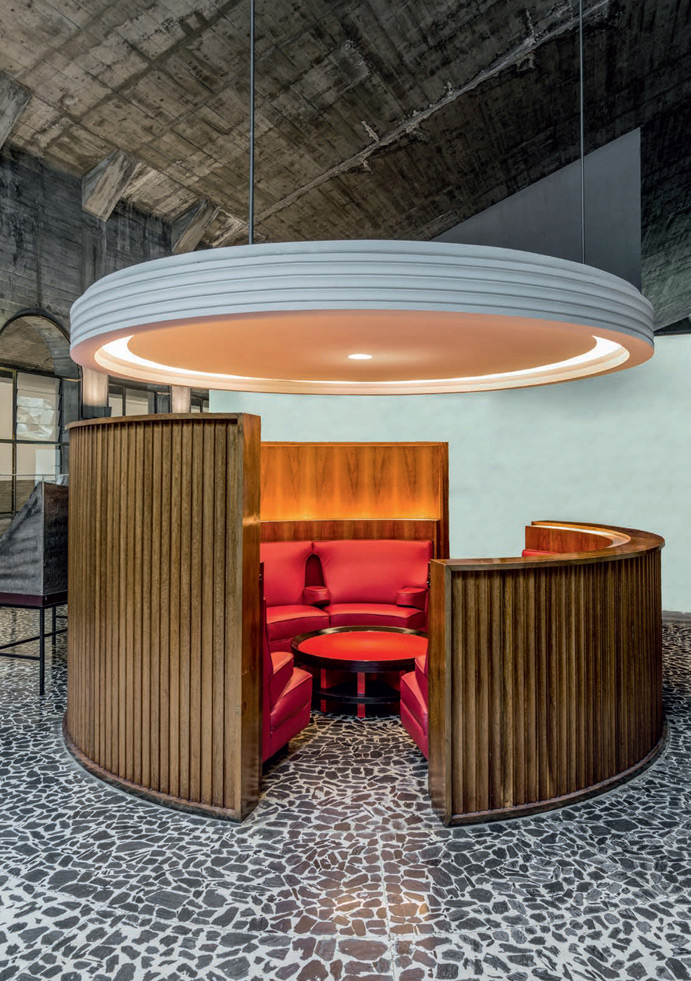
Salime hydraulic power plant, Rio Navia, opened 1954, owned by Saltos del Navia, CB.
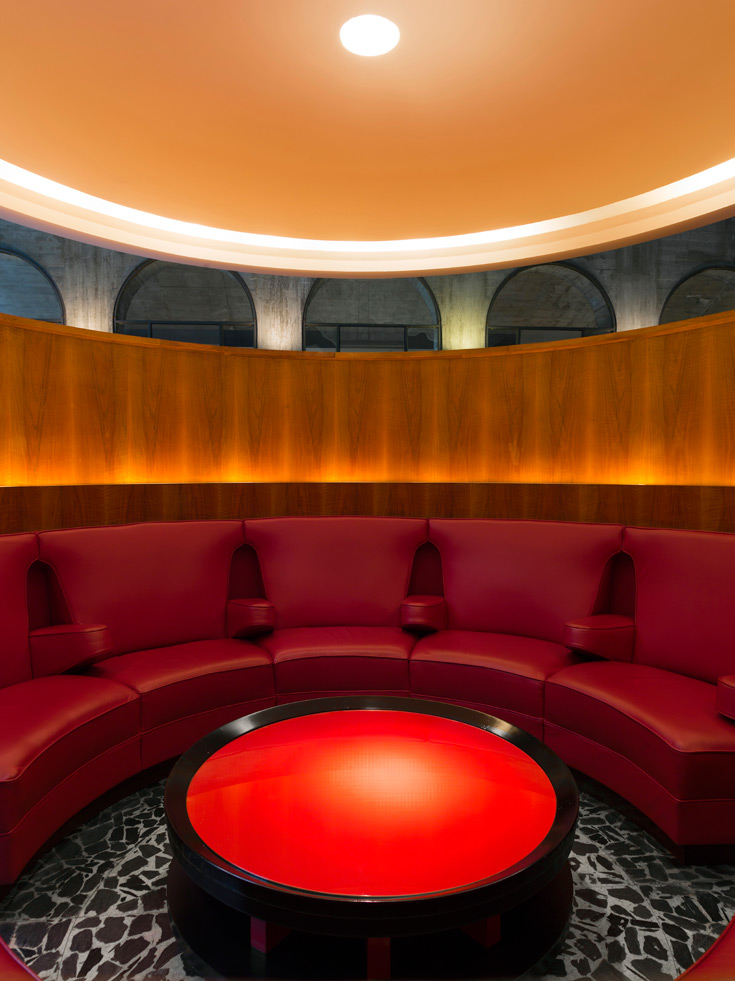
Salime hydraulic power plant, Rio Navia, opened 1954, owned by Saltos del Navia, CB.
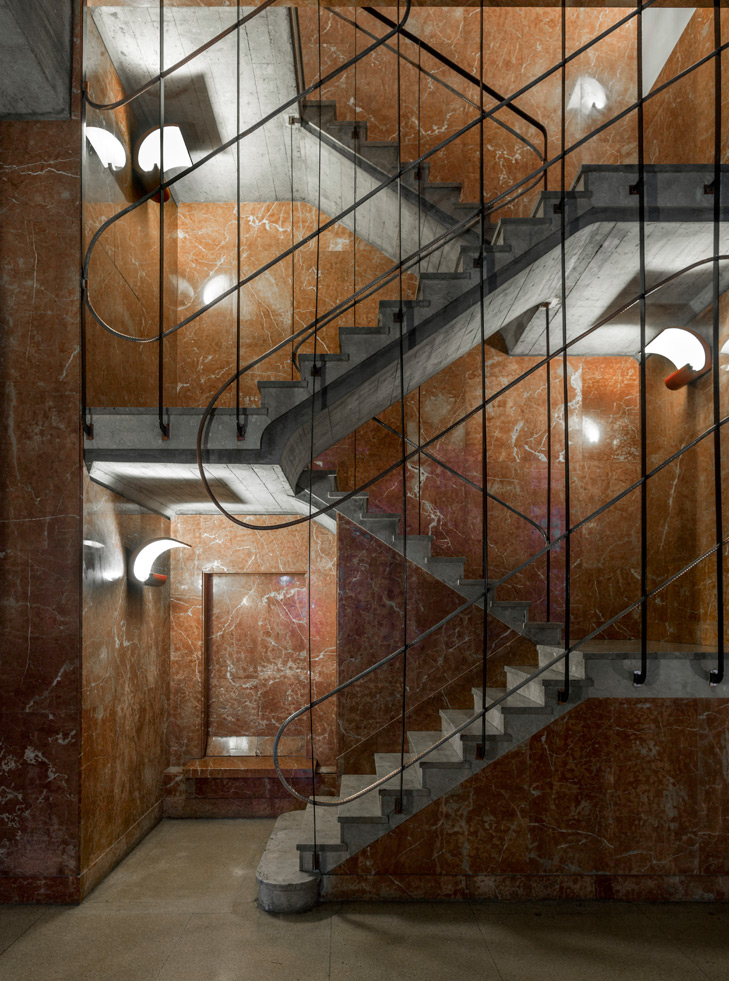
Salime hydraulic power plant, Rio Navia, opened 1954, owned by Saltos del Navia, CB.
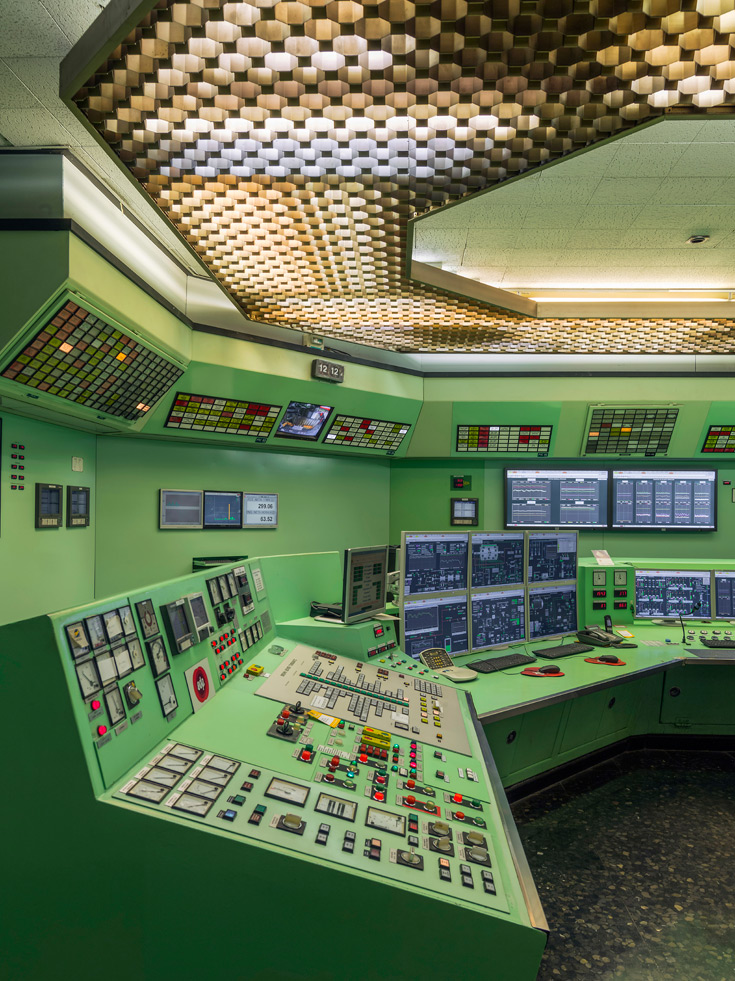
Aboño thermal power plant, Aboño valley between the municipalities of Gijón and Carreño, opened 1980, owned by EDP.
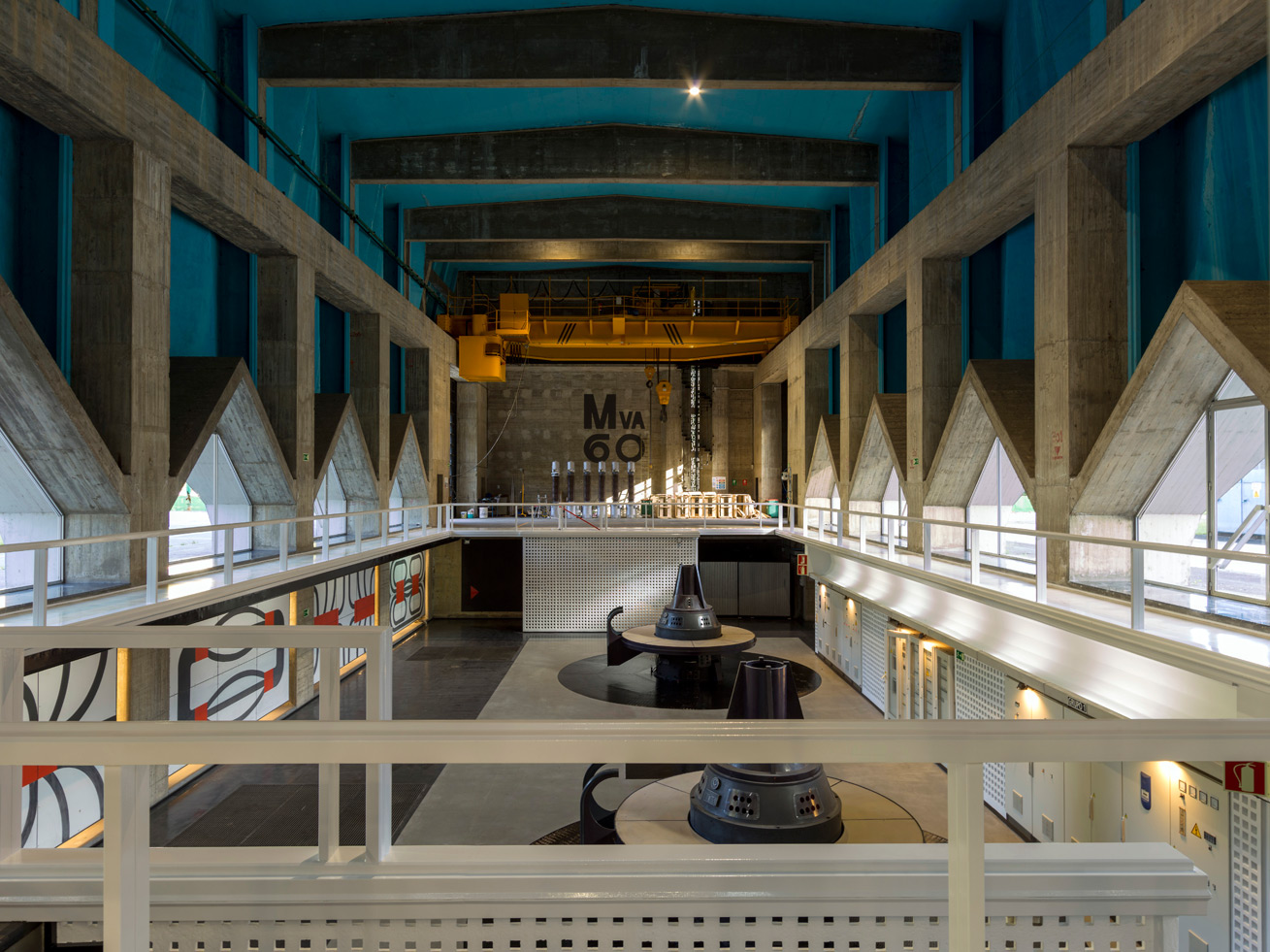
Proaza hydraulic power plant, Trubia River in Proaza, opened 1968, owned by EDP.
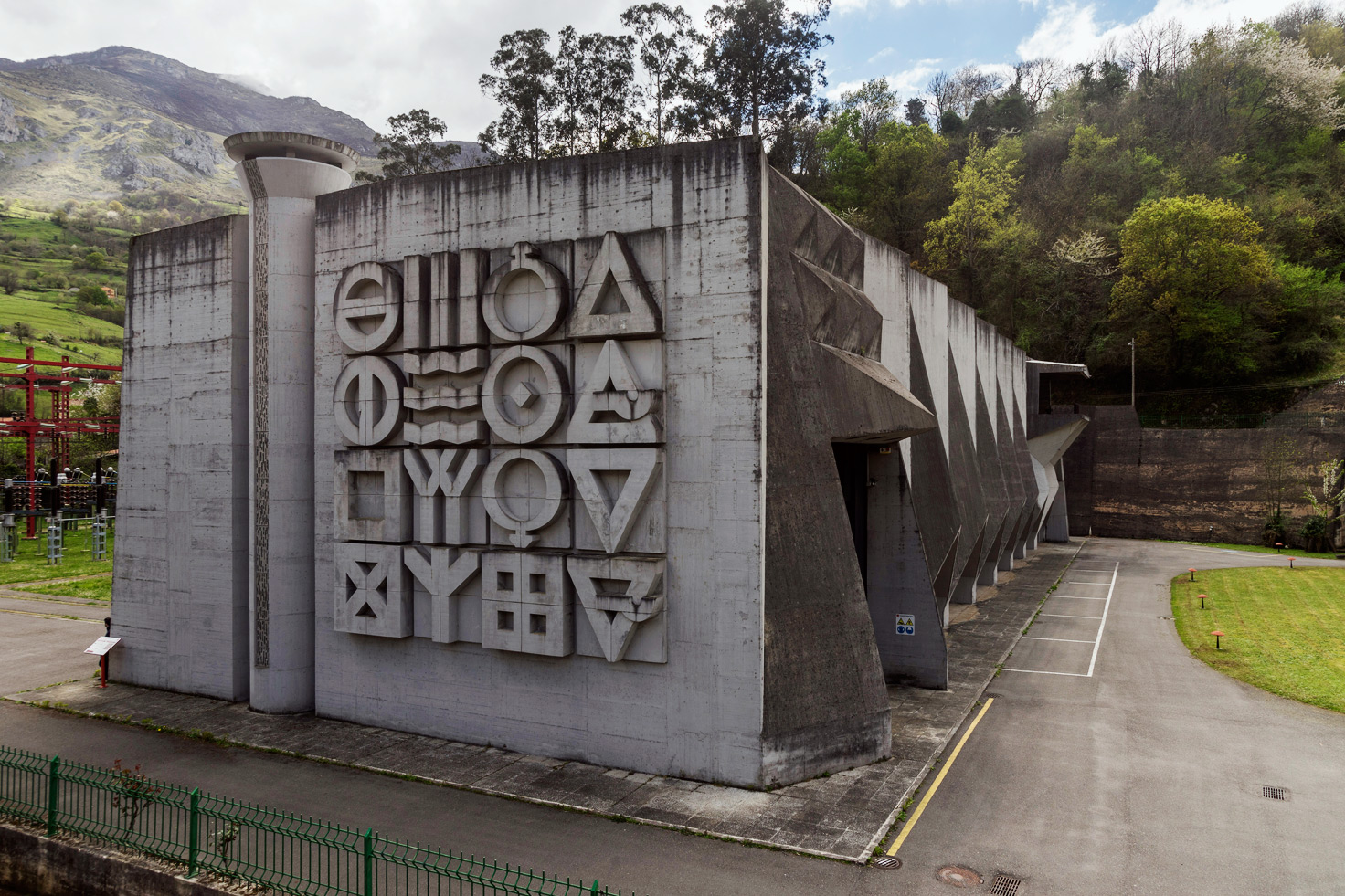
Proaza hydraulic power plant, Trubia River in Proaza, opened 1968, owned by EDP.
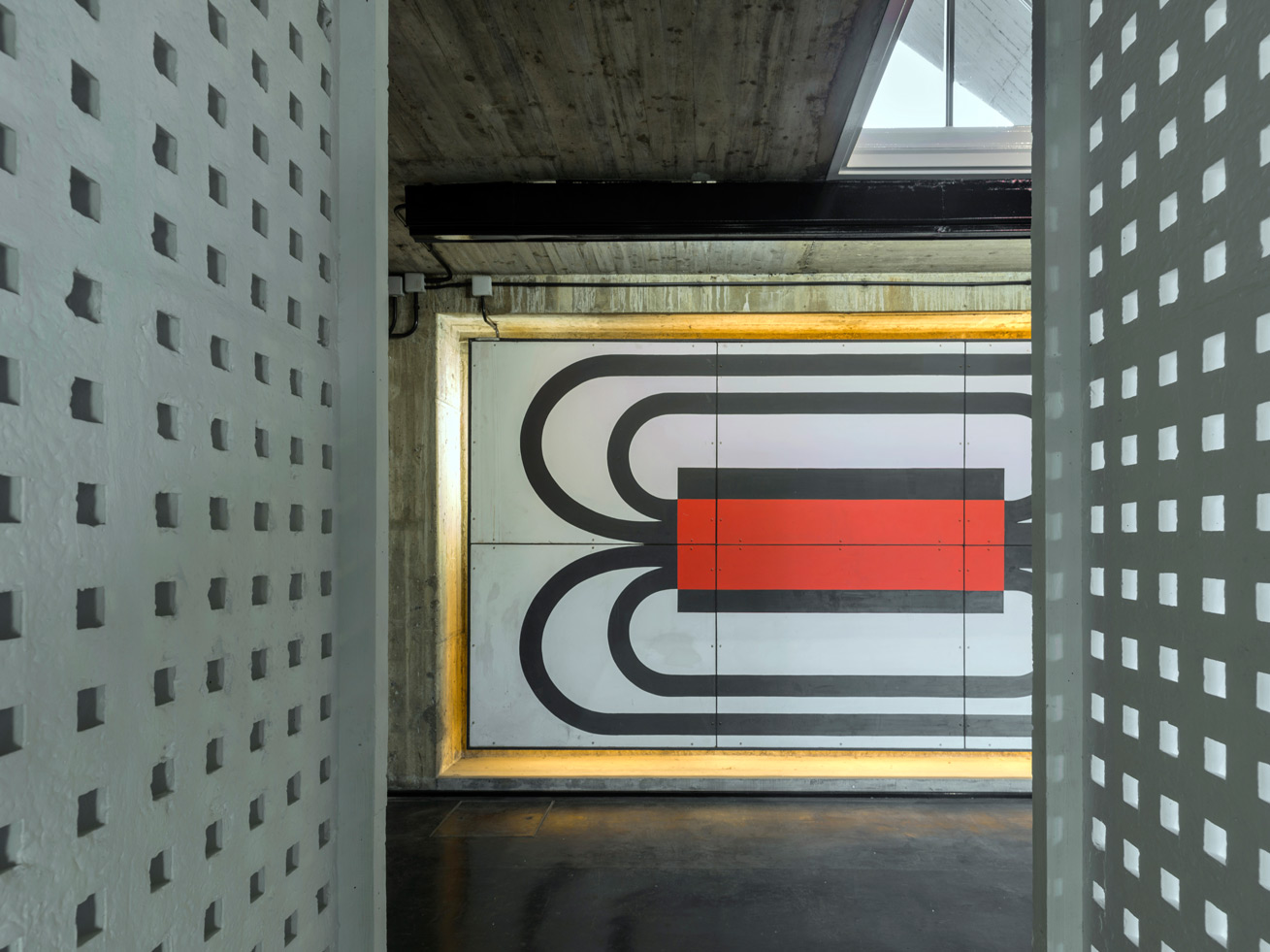
Proaza hydraulic power plant, Trubia River in Proaza, opened 1968, owned by EDP.
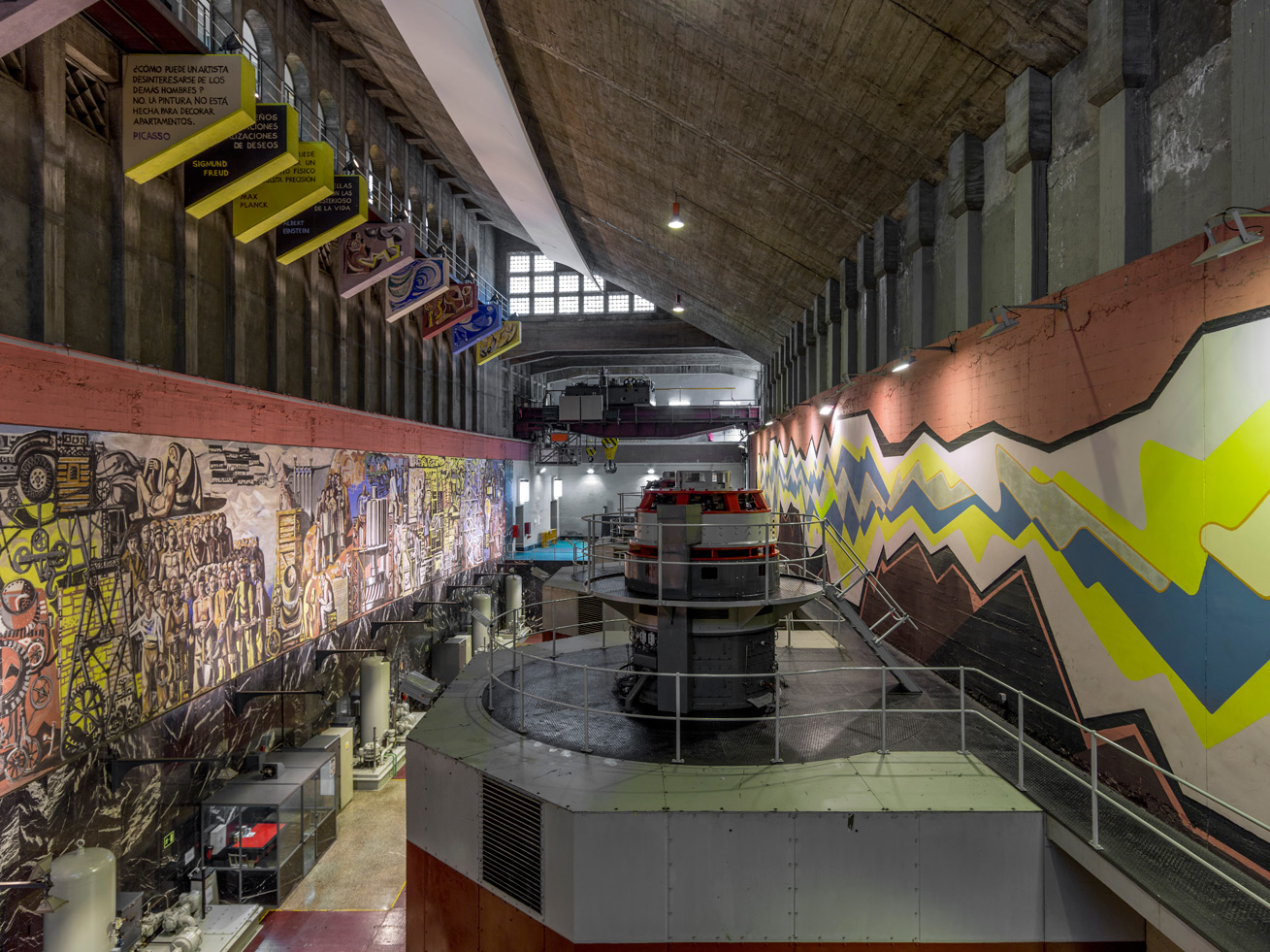
Salime hydraulic power plant, Rio Navia, opened 1954, owned by Saltos del Navia, CB. In the large turbine hall are two huge murals, a joint creation by father and son, Joaquín Vaquero Palacios and Joaquín Vaquero Turcios. The first of the murals, La Chispa, is colourful and abstract, representing an electric discharge between two terminals. The second of the murals, 300 sq m in size, narrates the complex history of the construction process of construction of the dam, from Vaquero Palacios’ arrival on horseback to the town of Grandas de Salime until the final use of the dam.
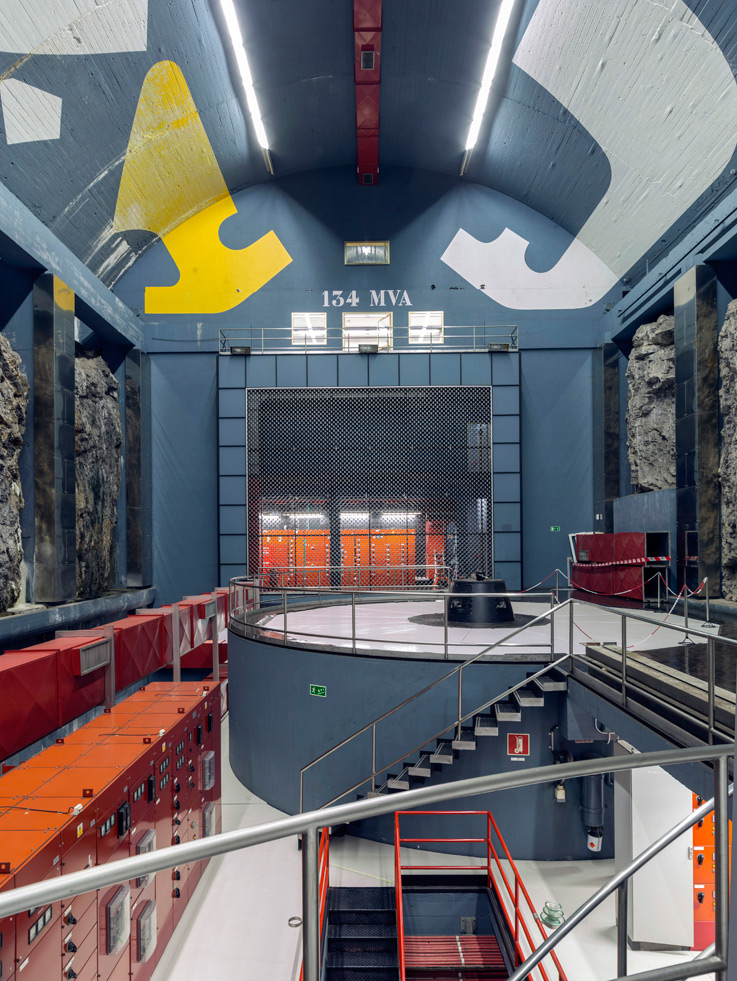
Tanes hydraulic power plant, Nalon River, Caso and Sobrescobio, opened 1978, owned by EDP.
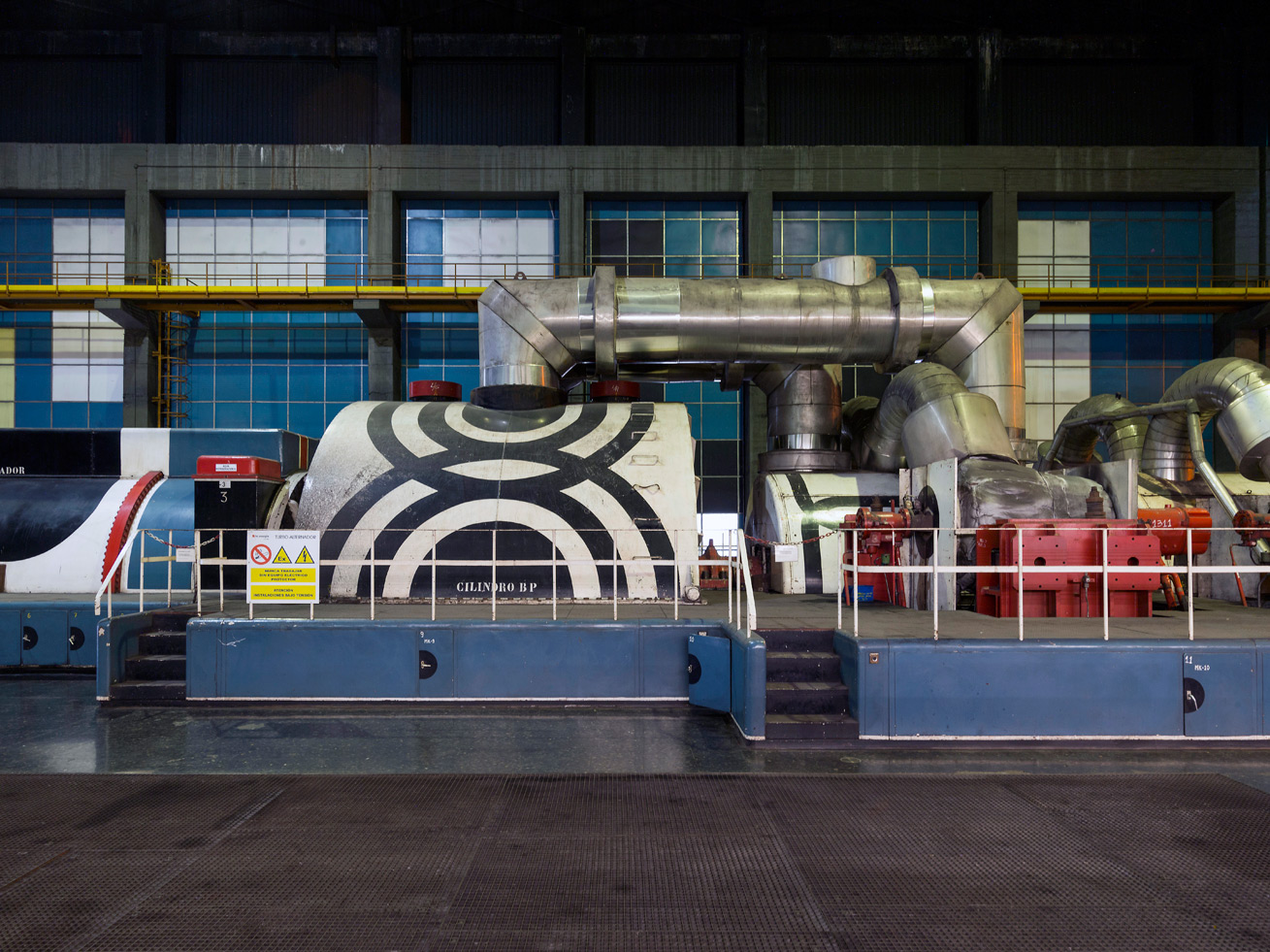
Proaza hydraulic power plant, Trubia River in Proaza, opened 1968, owned by EDP.
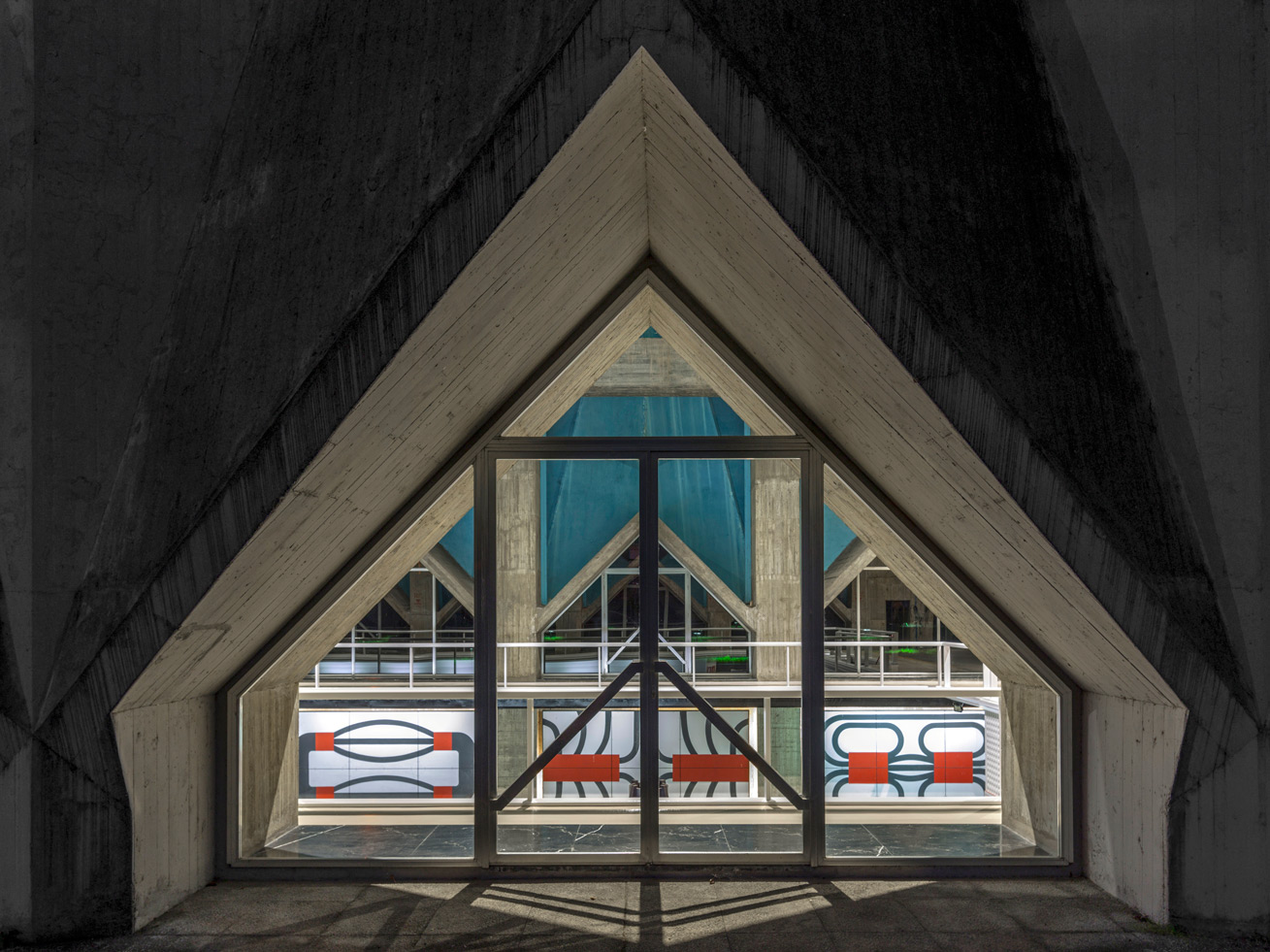
Proaza hydraulic power plant, Trubia River in Proaza, opened 1968, owned by EDP.

Miranda hydraulic power plant, Pigüeña River in Belmonte de Miranda, opened 1962, owned by EDP.
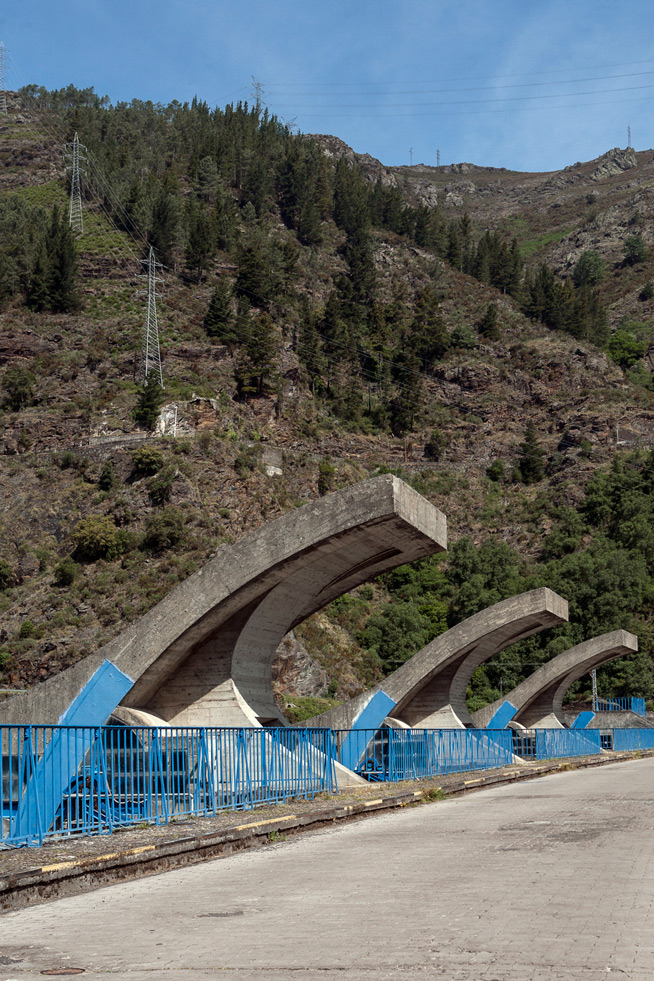
Salime hydraulic power plant, Rio Navia, opened 1954, owned by Saltos del Navia, CB.
INFORMATION
‘Joaquín Vaquero Palacios. La belleza de lo descomunal. Asturias 1954–1980’ is on view until 6 May. For more information, visit the Museo ICO website
ADDRESS
Museo ICO
Calle de Zorrilla 3
28014 Madrid
Yoko Choy is the China editor at Wallpaper* magazine, where she has contributed for over a decade. Her work has also been featured in numerous Chinese and international publications. As a creative and communications consultant, Yoko has worked with renowned institutions such as Art Basel and Beijing Design Week, as well as brands such as Hermès and Assouline. With dual bases in Hong Kong and Amsterdam, Yoko is an active participant in design awards judging panels and conferences, where she shares her mission of promoting cross-cultural exchange and translating insights from both the Eastern and Western worlds into a common creative language. Yoko is currently working on several exciting projects, including a sustainable lifestyle concept and a book on Chinese contemporary design.
-
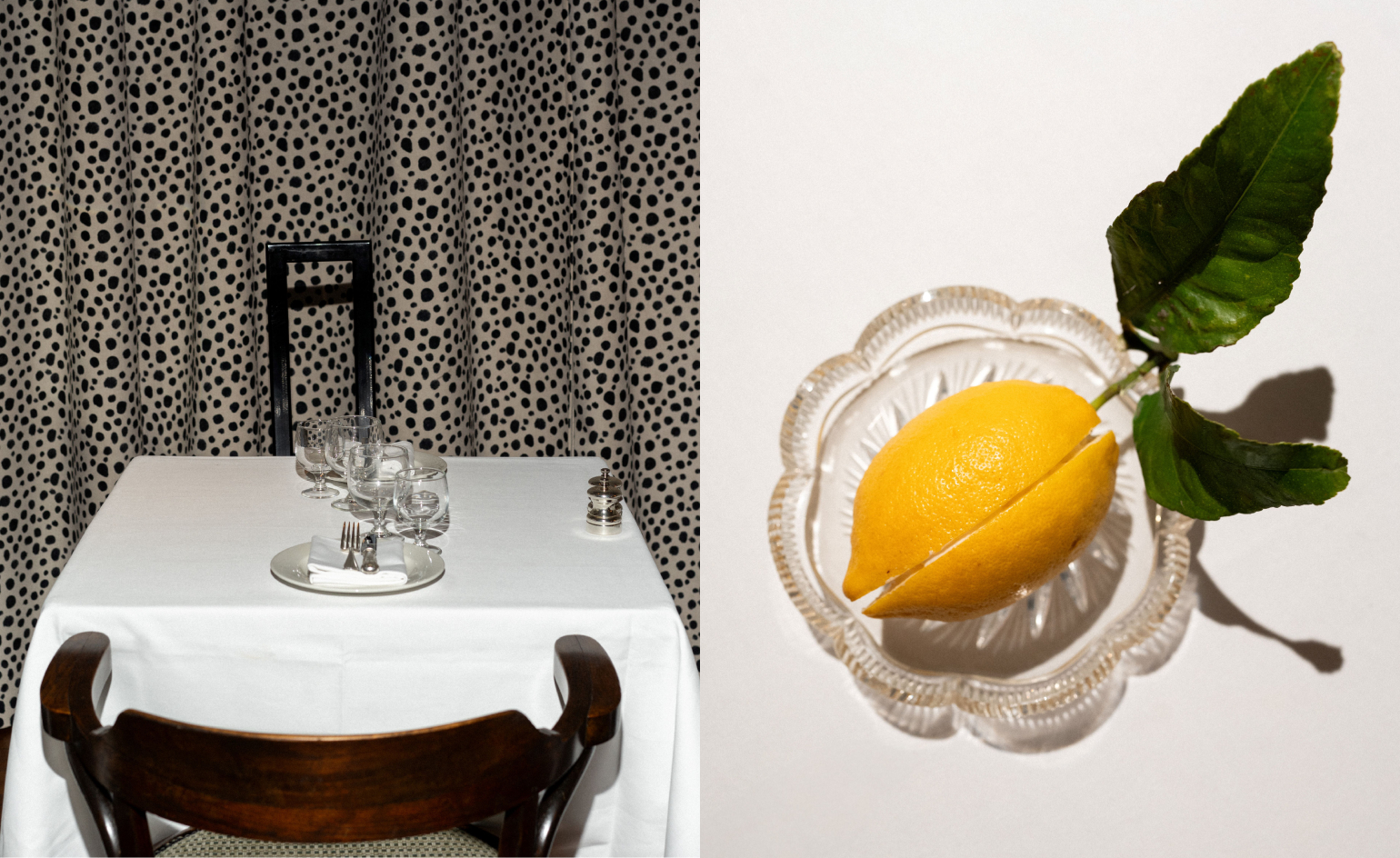 Marylebone restaurant Nina turns up the volume on Italian dining
Marylebone restaurant Nina turns up the volume on Italian diningAt Nina, don’t expect a view of the Amalfi Coast. Do expect pasta, leopard print and industrial chic
By Sofia de la Cruz
-
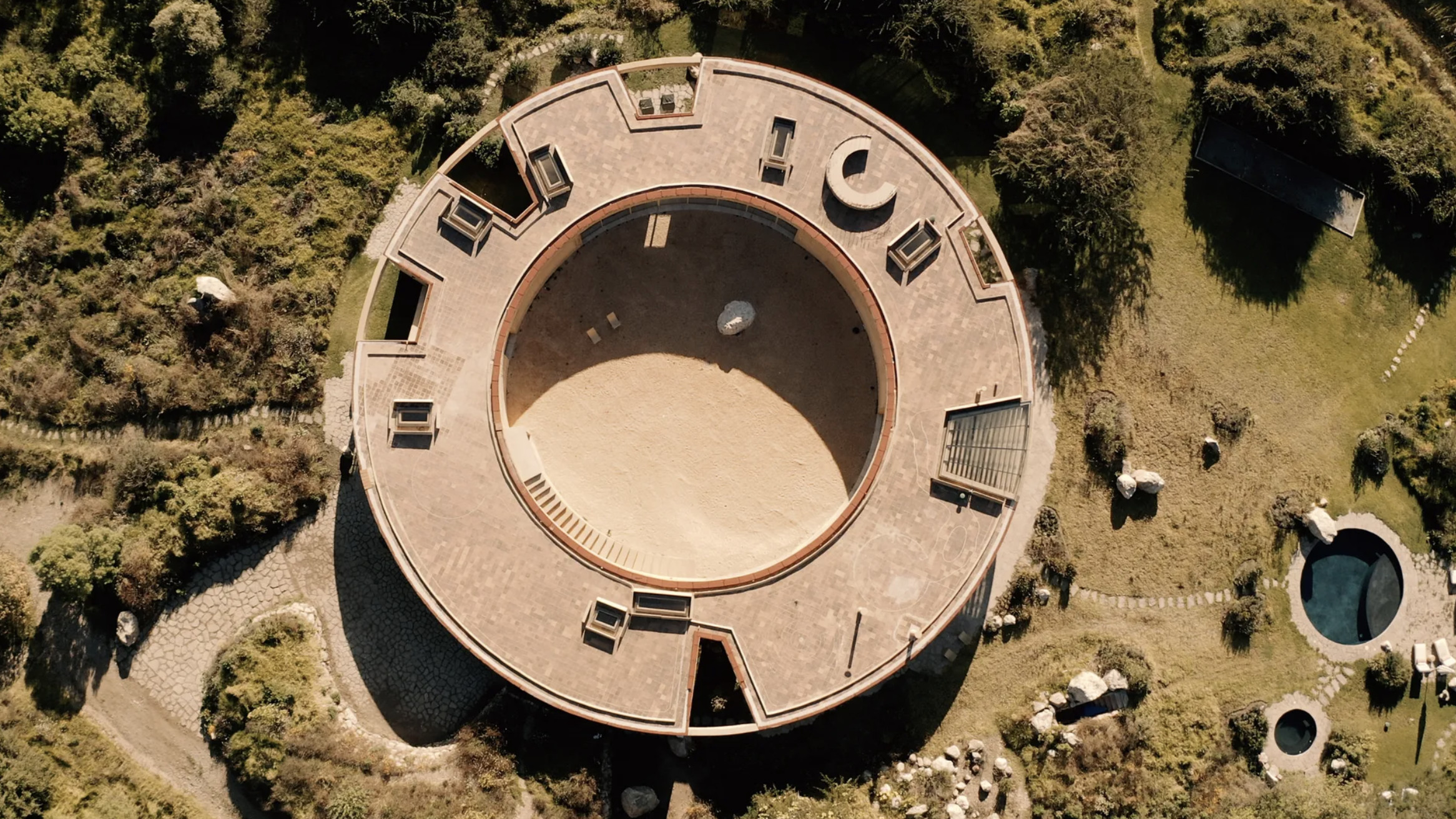 Tour the wonderful homes of ‘Casa Mexicana’, an ode to residential architecture in Mexico
Tour the wonderful homes of ‘Casa Mexicana’, an ode to residential architecture in Mexico‘Casa Mexicana’ is a new book celebrating the country’s residential architecture, highlighting its influence across the world
By Ellie Stathaki
-
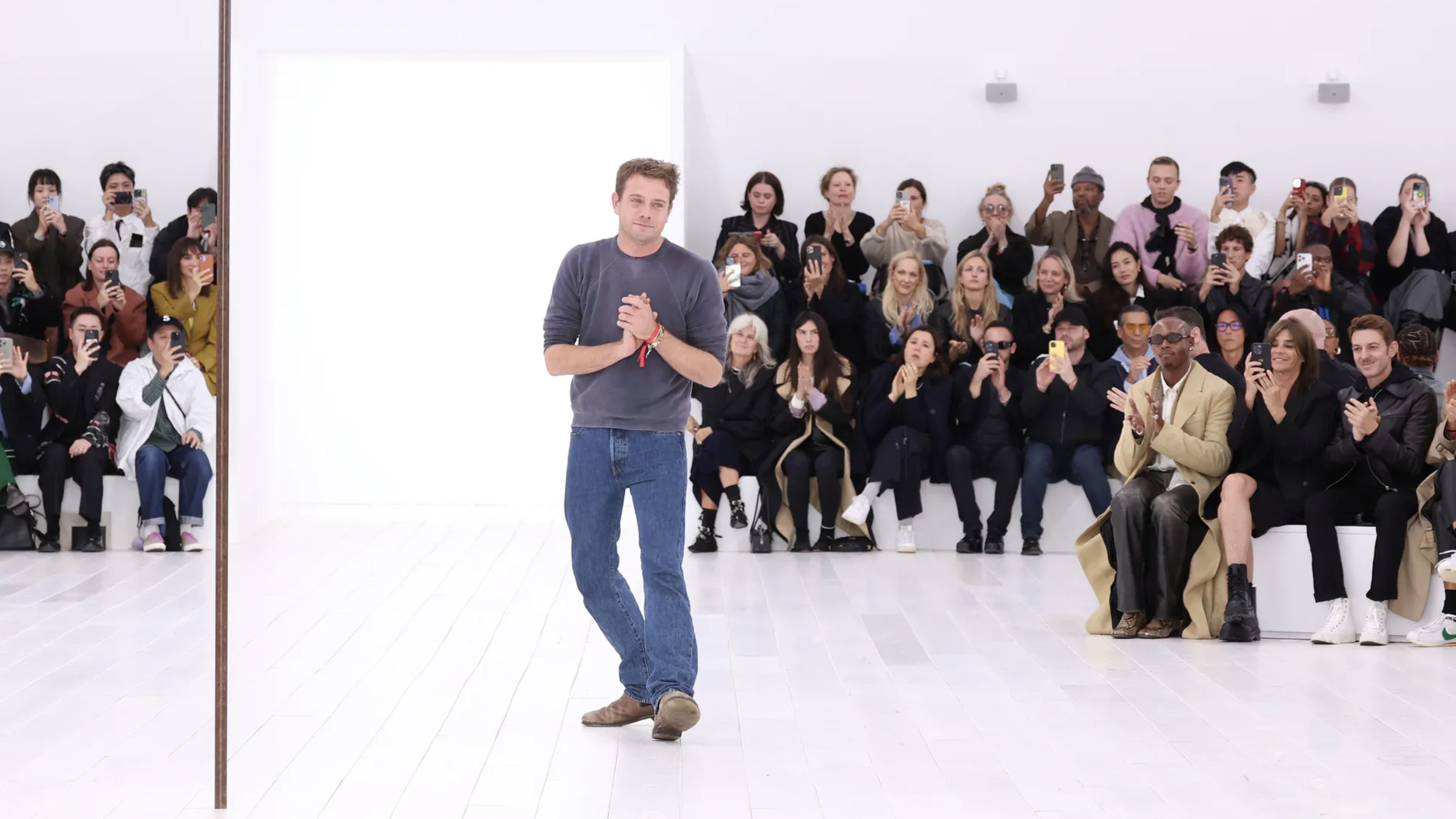 Jonathan Anderson is heading to Dior Men
Jonathan Anderson is heading to Dior MenAfter months of speculation, it has been confirmed this morning that Jonathan Anderson, who left Loewe earlier this year, is the successor to Kim Jones at Dior Men
By Jack Moss
-
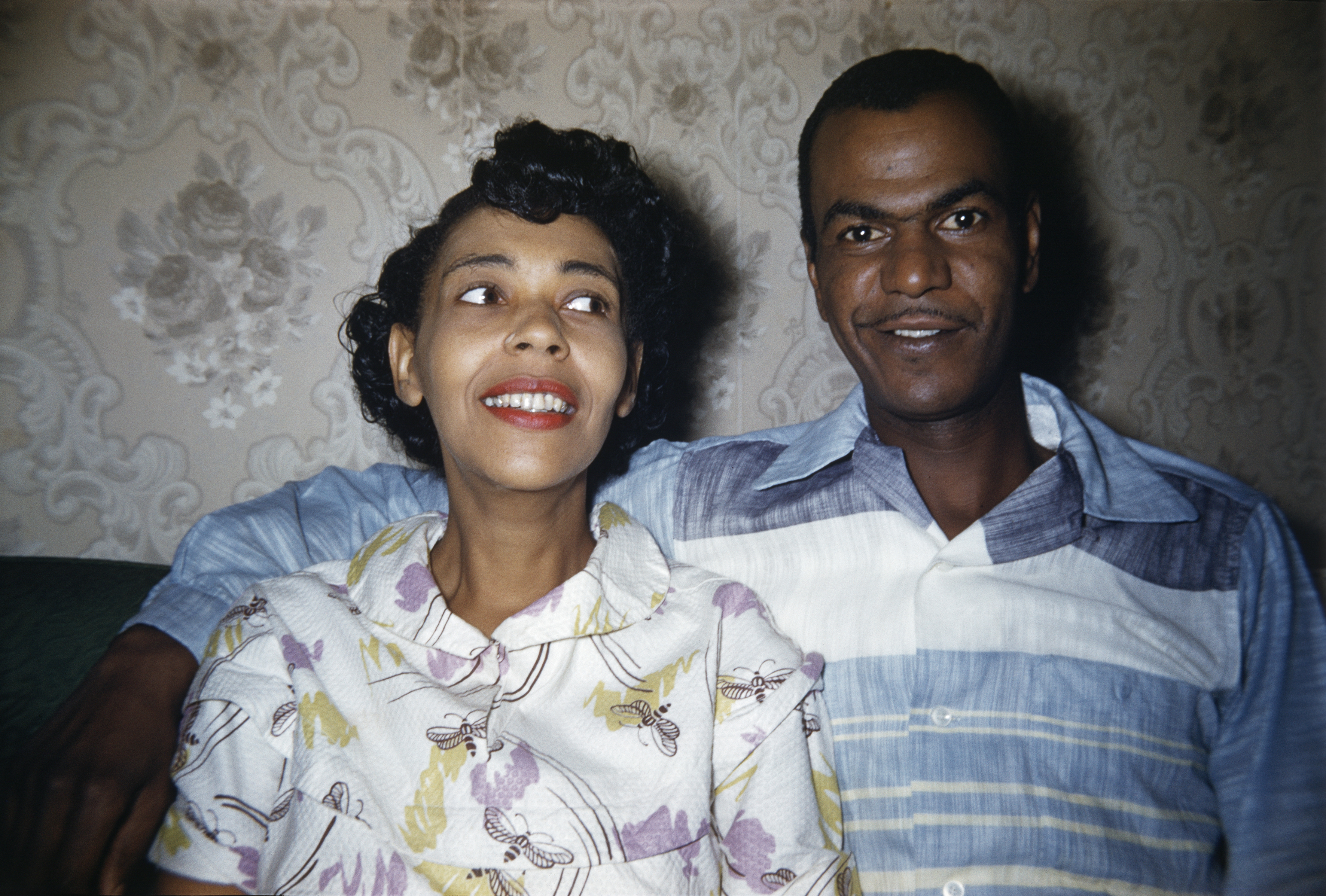 ‘Dressed to Impress’ captures the vivid world of everyday fashion in the 1950s and 1960s
‘Dressed to Impress’ captures the vivid world of everyday fashion in the 1950s and 1960sA new photography book from The Anonymous Project showcases its subjects when they’re dressed for best, posing for events and celebrations unknown
By Jonathan Bell
-
 Daniel Arsham’s new monograph collates the works of the auto-obsessed American artist
Daniel Arsham’s new monograph collates the works of the auto-obsessed American artist‘Arsham Motorsport’ is two volumes of inspiration, process and work, charting artist Daniel Arsham’s oeuvre inspired by the icons and forms of the automotive industry
By Jonathan Bell
-
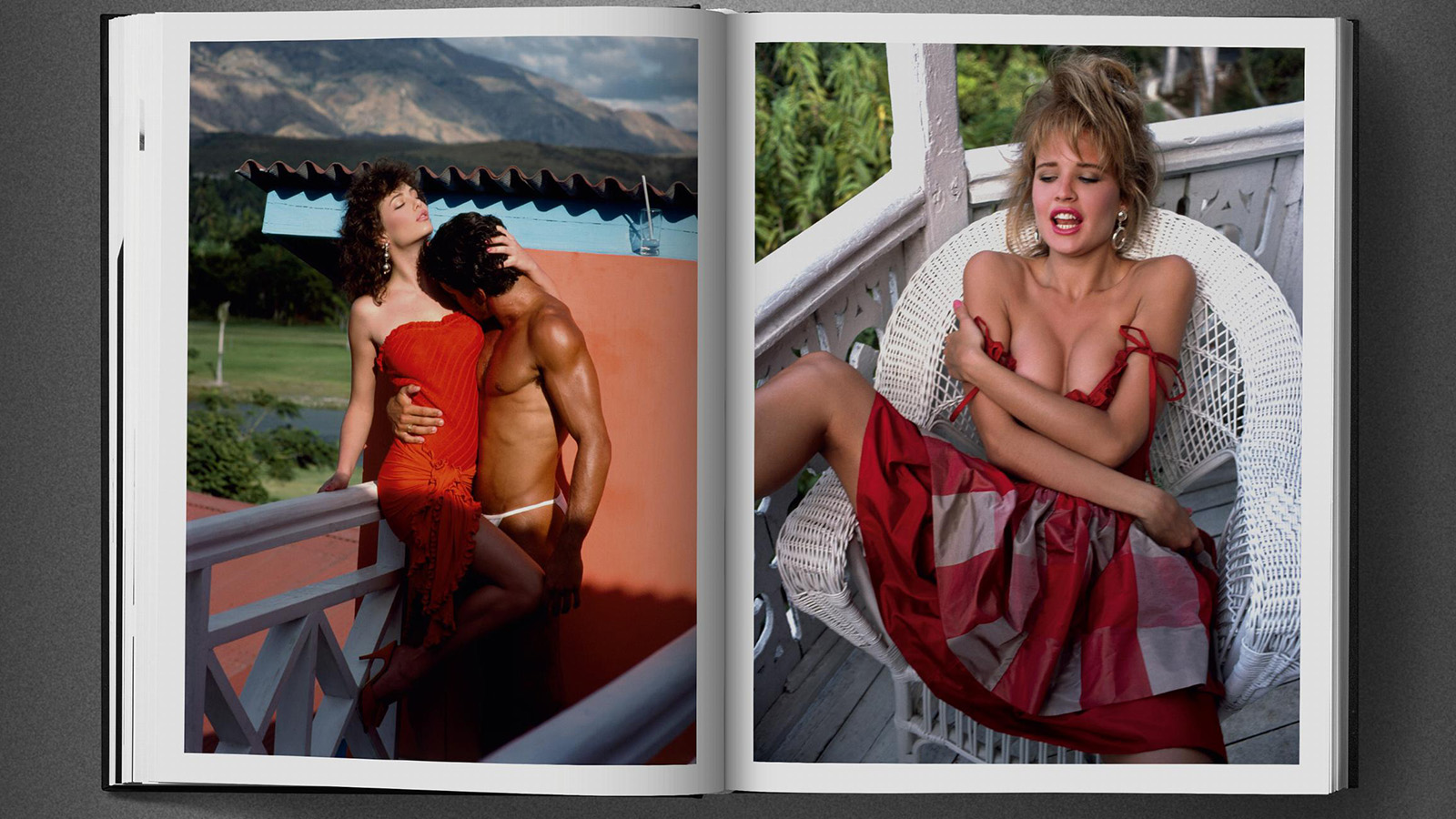 Era-defining photographer David Bailey guides us through the 1980s in a new tome not short of shoulder pads and lycra
Era-defining photographer David Bailey guides us through the 1980s in a new tome not short of shoulder pads and lycraFrom Yves Saint Laurent to Princess Diana, London photographer David Bailey dives into his 1980s archive in a new book by Taschen
By Tianna Williams
-
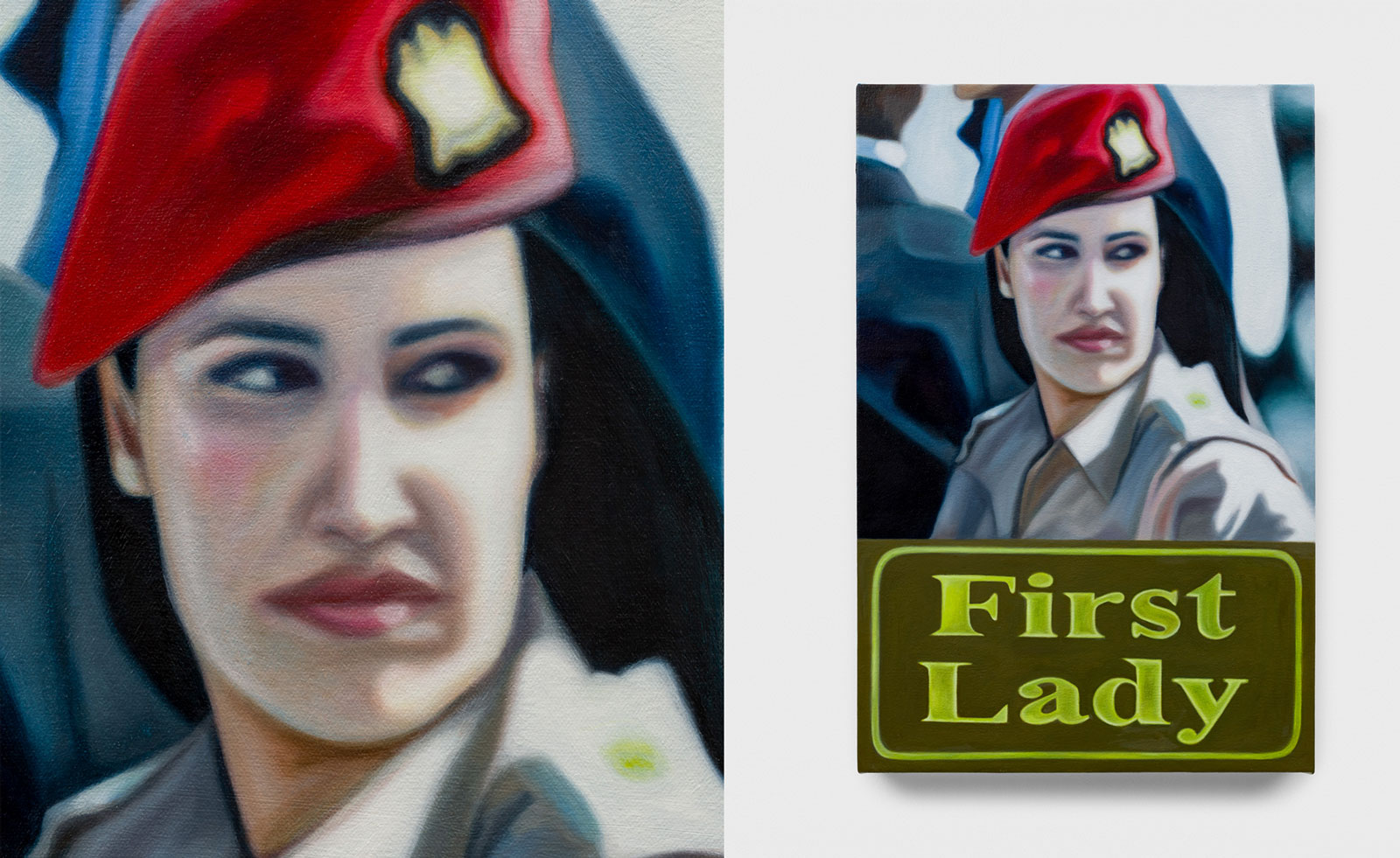 Tasneem Sarkez's heady mix of kitsch, Arabic and Americana hits London
Tasneem Sarkez's heady mix of kitsch, Arabic and Americana hits LondonArtist Tasneem Sarkez draws on an eclectic range of references for her debut solo show, 'White-Knuckle' at Rose Easton
By Zoe Whitfield
-
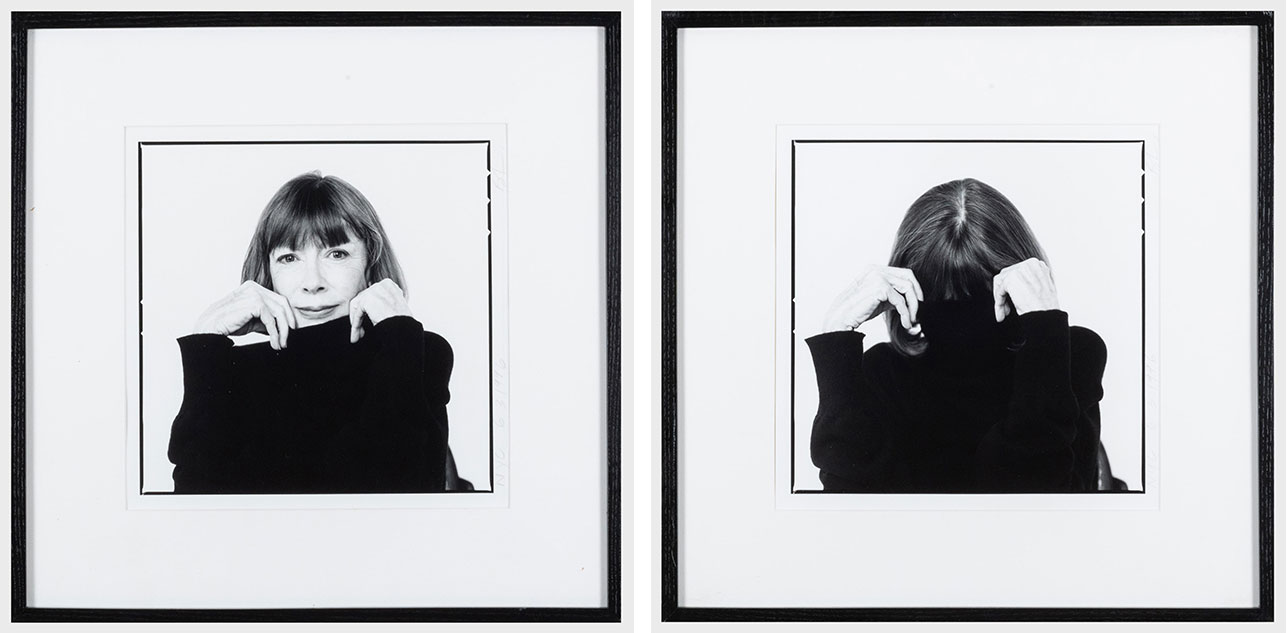 Inside Joan Didion’s unseen diary of personal relationships and post-therapy notes
Inside Joan Didion’s unseen diary of personal relationships and post-therapy notesA newly discovered diary by Joan Didion is soon to be published. Titled 'Notes to John', the journal documents her relationship with her daughter, husband, alcoholism, and depression
By Tianna Williams
-
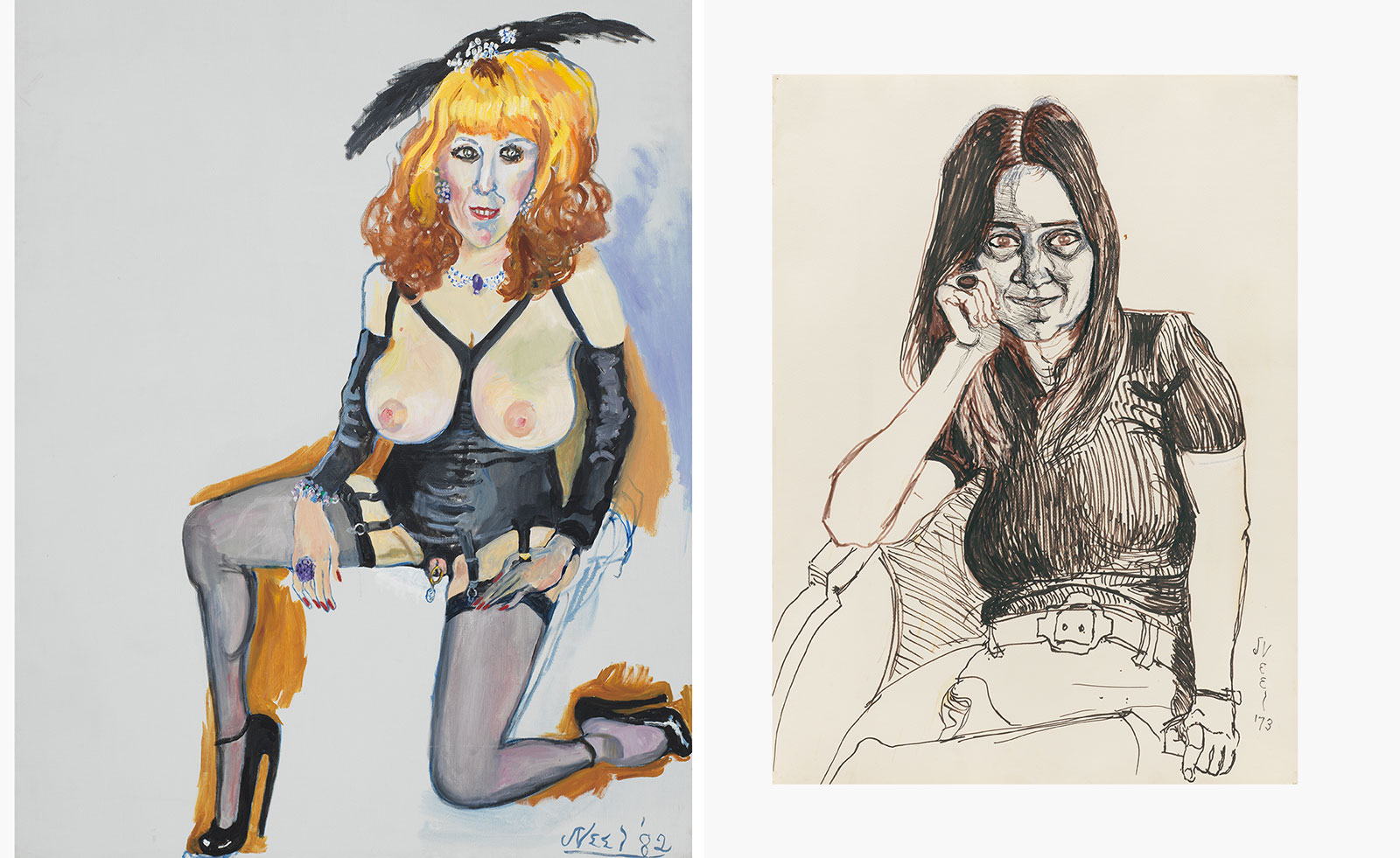 Alice Neel’s portraits celebrating the queer world are exhibited in London
Alice Neel’s portraits celebrating the queer world are exhibited in London‘At Home: Alice Neel in the Queer World’, curated by Hilton Als, opens at Victoria Miro, London
By Hannah Silver
-
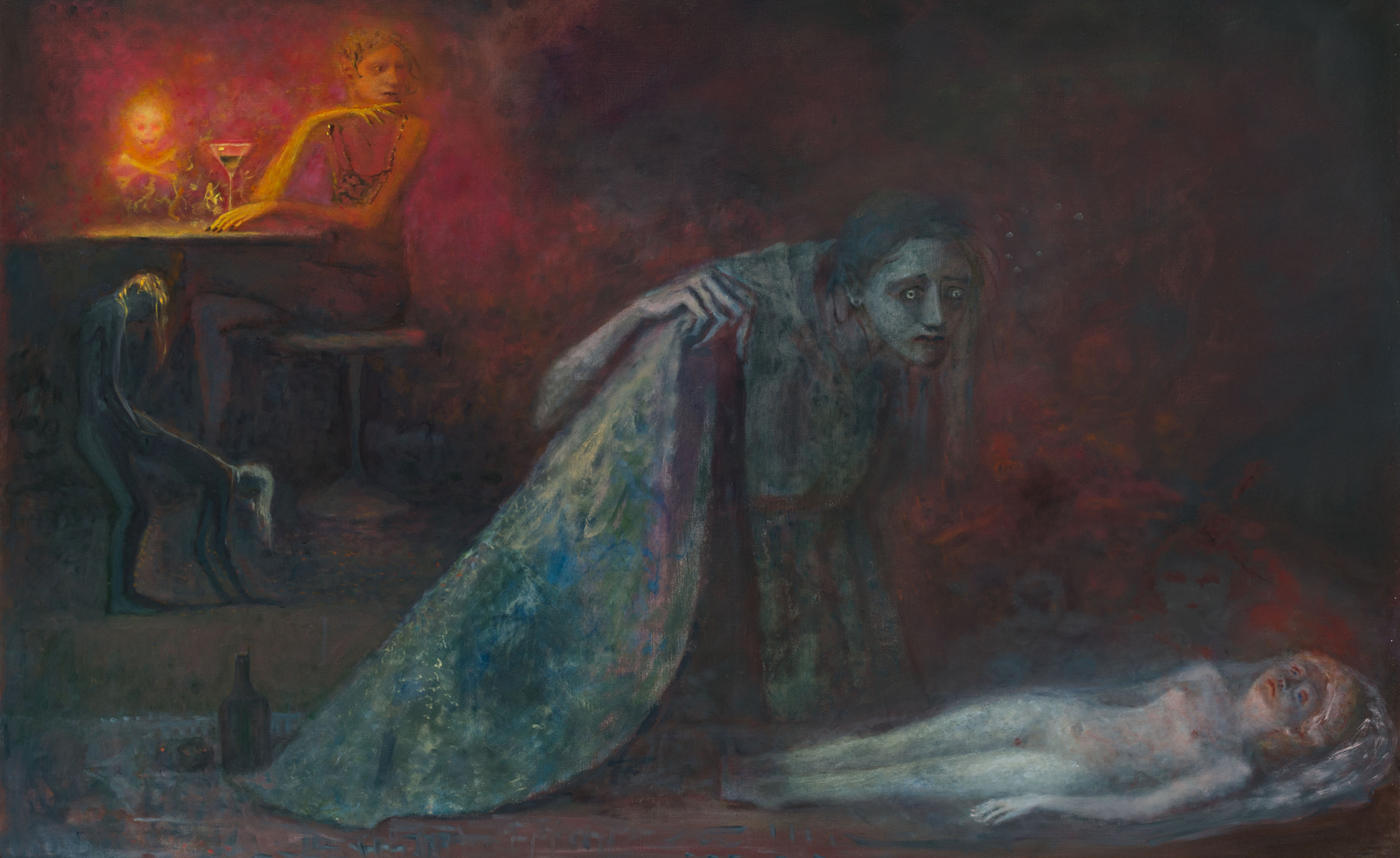 ‘You have to face death to feel alive’: Dark fairytales come to life in London exhibition
‘You have to face death to feel alive’: Dark fairytales come to life in London exhibitionDaniel Malarkey, the curator of ‘Last Night I Dreamt of Manderley’ at London’s Alison Jacques gallery, celebrates the fantastical
By Phin Jennings
-
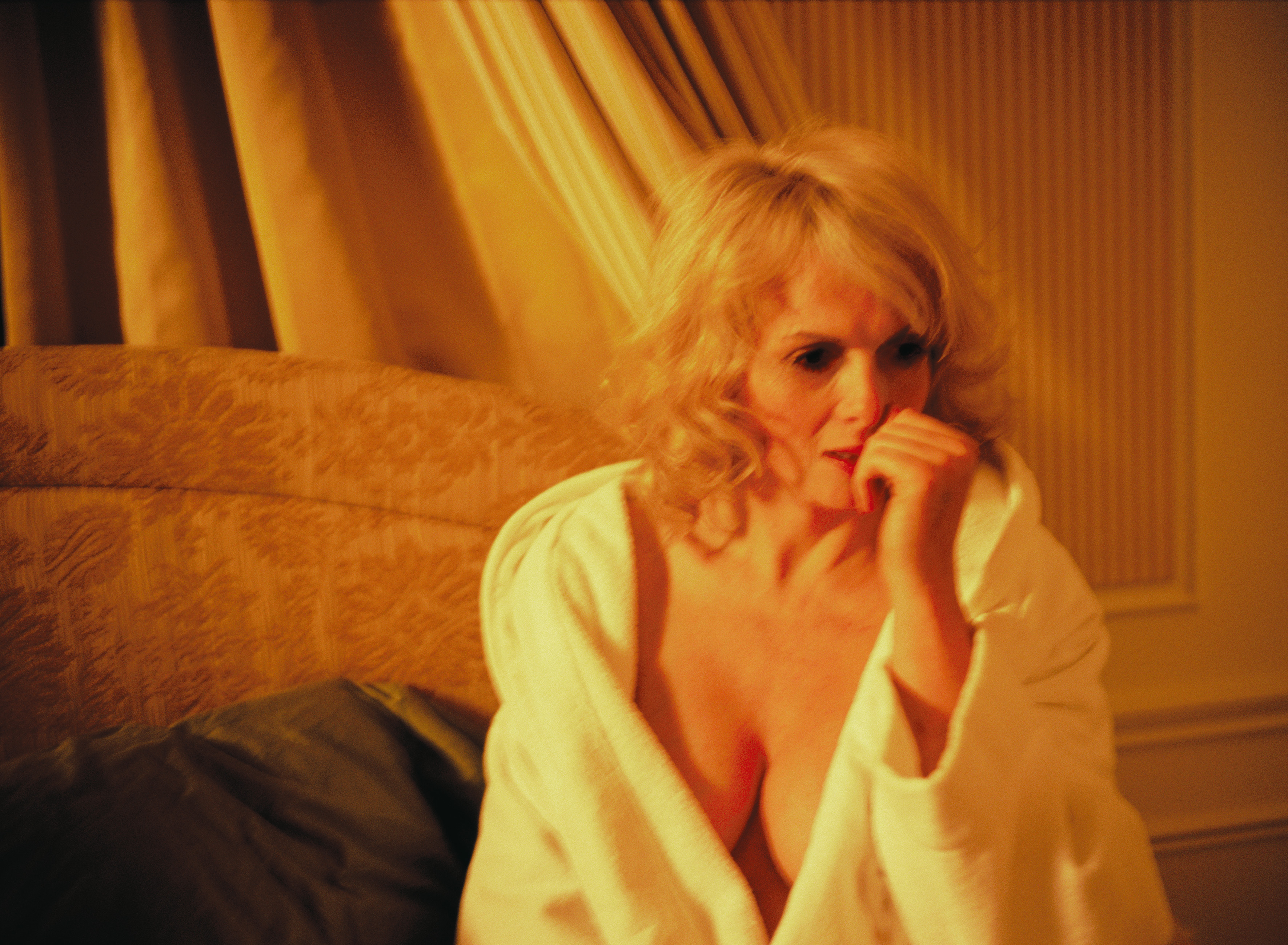 Carsten Höller’s new Book of Games: 336 playful pastimes for the bold and the bored
Carsten Höller’s new Book of Games: 336 playful pastimes for the bold and the boredArtist Carsten Höller invites readers to step out of their comfort zone with a series of subversive games
By Anne Soward